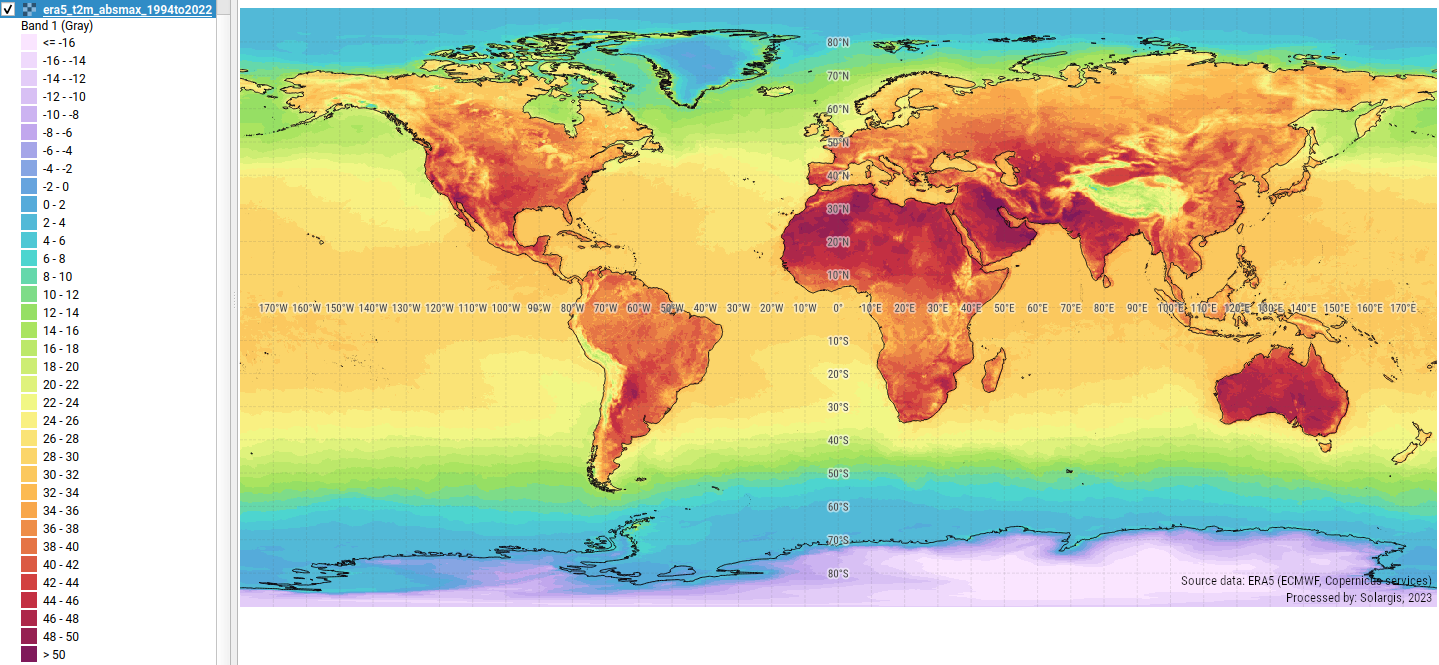First question on this StackExchange, so here goes...
Overall, reaching high temperatures is dependent on 2 factors:
- The (maximum) solar angle in the day. The greater the solar angle, the more insolation is received by the surface and air, allowing higher maximum temperatures assuming no thermal inertia.
- The length of the day. The longer the day, the more total solar radiation arrives in one 24-hour span, and the shorter the night is to radiate off excess energy, both of which due to the thermal inertia of the atmosphere and ground bias them towards hot temperatures.
(Again due to thermal inertia, it may be dependent on the day length and solar angle of previous days, though this influence is more minor.)
The first factor explains why even though at the summer solstice the poles accumulate more solar energy over 24 hours than any other place on Earth (I know I had a source on this. I can't find it, though.), they are still extremely cold as the low solar angle prevents reaching higher temperatures. The second factor explains why even though the equatorial region has the highest average maximum solar angles throughout the year, they don't get especially hot (even in rare desert areas) as the day length is nearly constant throughout the year.
Ergo, the outer tropics and the subtropics experience the hottest extreme maximum temperatures on Earth. This can be seen in the records for each continent that has a large stretch in that area:
- America (South): 48.9 °C in Rivadavia, Argentina (24.18[3]° S)
- Africa (South): 50 °C in Dunbrody, South Africa (~33.4° S)
- Australia: 50.7 °C in Oodnadatta, South Australia (27.54811° S)
- Africa (North): 51.3/53.5 °C in Ouargla, Algeria (31.95° N)
- Asia: 53.9 °C in Mitribah, Kuwait (29.81[6]° N)
- and lastly, America (North): 54.0/54.4/56.7 °C in Furnace Creek, California, USA at a rather high 36.458056° N.
Presumably, the spread in latitudes is due to the geography in those areas being much more suited to the generation of extreme heat than places at the "absolute ideal latitude". But what is this absolute ideal latitude? At what point from the equator do the combination of day length and solar angle in summer create the most optimal conditions for extreme heat, other factors being equal?
(My scientific wild ass guess is 30°, but I'd like a more educated answer.)

